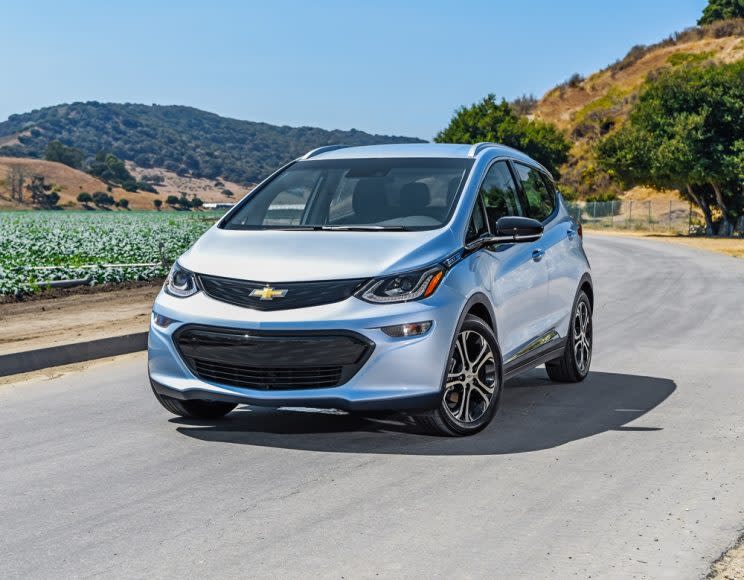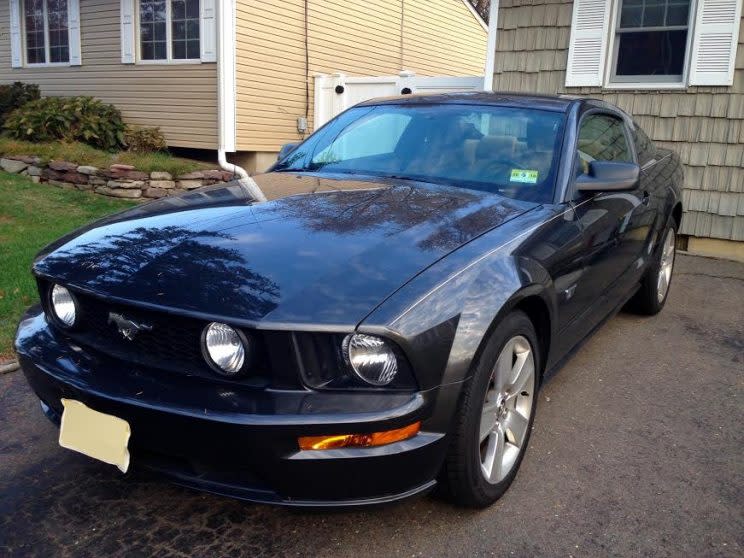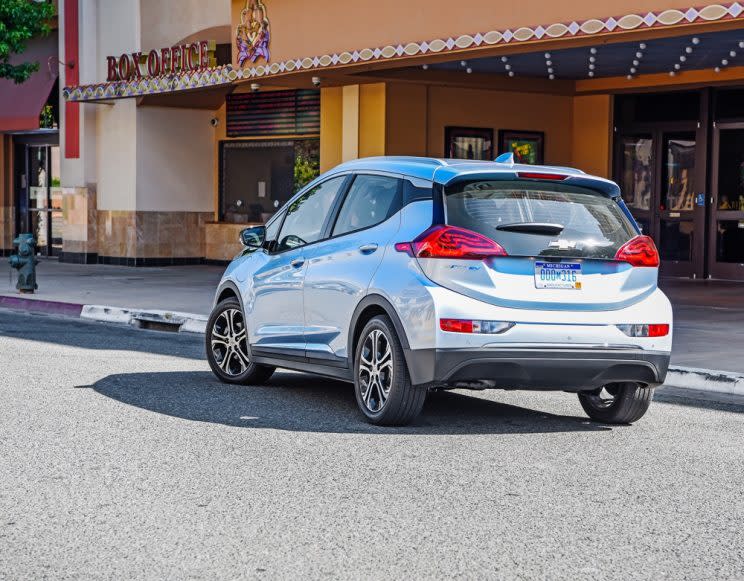I drove the electric Chevy Bolt all weekend and only freaked out once

Electric cars are the present and future of driving. But most consumers haven’t had any experience behind the wheel of these high-tech vehicles, yours truly included.
Which is why when Chevy (GM) offered me the chance to borrow a Bolt EV for a weekend, I jumped at the opportunity.
The Bolt is a technological marvel. The first pure-electric vehicle designed for mainstream consumers, the Bolt starts at $29,995 after a federal tax credit, can travel an estimated 238 miles on a single charge and seats five. Tesla (TSLA) will offer a similar experience with its upcoming Model 3, setting up an electric showdown for the mass market.
So what’s it like to drive an electric car compared to say, my incredibly cool and in no way impractical 2007 Ford (F) Mustang GT? As it turns out, it’s actually quite different, especially when it comes to things like accelerating, braking, refueling and how long you can travel on a single tank of gas versus a single charge. There’s definitely a bit of a learning curve, and I did experience a bit of range anxiety. But overall it’s certainly worth it.

Electric Power
My Mustang is a V8-powered beast that makes 300 horsepower, 320 pound-feet of torque and sounds like the end of the world. Hearing the engine burble while cruising down back roads on warm summer nights brings me nothing but joy.
The Bolt, on the other hand, offers a far more buttoned up experience. Its 200 horsepower electric drive motor makes 266 pound-feet of torque. And since there’s no exhaust on an electric car, the only thing you really hear is the sound of tires rubbing against pavement and the slight whine of the car’s motor during acceleration.

It’s a somewhat strange experience, as all of the little road noises that are usually muffled by the sound of an engine become far more noticeable. On the plus side, it’s a whole lot easier to hear your tunes and the person sitting next to you.
Burning rubber
What really blew my mind though was the Bolt’s acceleration compared to my gas-powered car. The fossil fuel sipping vehicle sitting in most American’s driveways needs a transmission to hit its peak power output at different speeds. If it didn’t have a transmission, your car’s engine would just keep revving until it hit its redline and blow up.
But electric car motors don’t have to worry about that, because they have huge amounts of torque available from the get go. They can also continually rev without your having to worry about them exploding, since they are, obviously, completely different from gas-powered engines.
The result? Acceleration never seems to stop in an electric. Instead of the usual pause in thrust you feel when a gas-powered car changes gears, the Bolt just keeps going.

No, the Bolt won’t blow you away from a dead stop, and I couldn’t pull off a burnout in it like I can in my Mustang. But electric cars like the Bolt will absolutely shock you when you’re already driving at highway speeds. That’s because while gas-powered engines are more restrained when under load, EV engines can still pour on the power.
As a result, smashing the accelerator in the Bolt while doing 60 on the Brooklyn Queens Expressway pinned my fiancée and me to our seats. You’re not going to get that in most other cars. And while the sudden boost was a bit unnerving, we immediately floored it again.
Hitting the brakes
So yeah, accelerating in an electric car is … odd. At first, at least. But braking in a car like the Bolt feels like a totally different experience. That’s because Chevy equipped the Bolt with regenerative braking in order for the car to get 238 miles on a single charge, .
That means the energy expended by slowing the car is recycled into its battery. A lot of electric and hybrid cars have this kind of feature. But Chevy adds a low drive mode that automatically begins regenerating power and slowing the Bolt as soon as you take your foot off the accelerator, allowing for one-foot driving.
I actually drove from my apartment in Queens to my parents’ house in New Jersey through bumper-to-bumper traffic using the low drive mode and didn’t use the brake once.
The deceleration in low drive is also surprisingly aggressive and takes some getting used to. When I rolled out of the parking garage after picking up the Bolt for the first time, I was genuinely shocked at how quickly the car came to a stop on its own.
Range anxiety and recharging
It’s about 50 miles from my apartment to my parents’ place. With the Bolt’s 238 miles of range, I should have had plenty of juice to get there and back without issue. But with the cold weather cutting down the battery’s range to about 180 miles and the heater and windshield wipers further eating into the available power, I started to experience serious range anxiety.
Sure, 180 miles worth of charge was more than enough power, but I still spent a good amount of time worrying about whether I would run out of battery life on the road.

That’s because charging stations for electric cars are still relatively rare. While driving around in my Mustang, I don’t have to worry about running out of gas, because not only are stations easy to find, but refueling takes less than 10 minutes.
Charging a car like the Bolt, though, takes significantly more time. Even if you use the most powerful charger around, a DC fast charger, it’ll still take 30 minutes to get 90 miles of range. With a 240-volt home charger, you’ll get 25 miles every hour. Filling my tank with gas, meanwhile, gets me more than 200 miles in next to no time.
I actually ended up charging the Bolt at my parents’ house for fear of ending up stuck in traffic on my way back to Queens and running out of power.
Going electric
After spending a few days with the Bolt, I genuinely feel like I could live with an electric car. But my fear of running out of power on the road is still very real.
For now, I’m going to stick with my gas-powered Mustang, because it’s simply easier to get around, and also incredibly rad. But as more charging stations come online and manufacturers shrink battery charging times, I’ll certainly feel more inclined to snag an electric car of my own.
More from Dan:
The McAfee brand is back against after Intel finalizes spin-off
Windows 10 Creators Update: Microsoft’s best just got better
Samsung Galaxy S8 and S8 Plus: Giant screens, new voice controls and no fires
Email Daniel at dhowley@yahoo-inc.com; follow him on Twitter at @DanielHowley.

 Yahoo Finance
Yahoo Finance 
